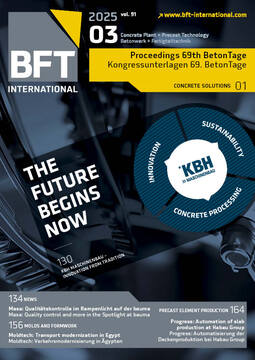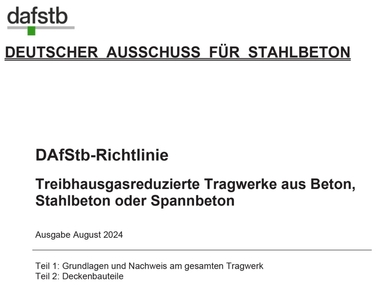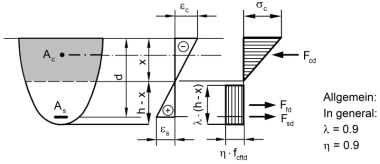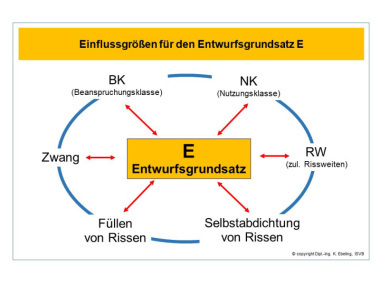Panel 13: Concrete in structural design
85 Climate-friendly concrete construction using standardized benchmarks – The GHG guideline published by the DAfStb
Klimaschonender Betonbau mit genormten Benchmarks – Die THG-Richtlinie des DAfStb
Univ.-Prof. Dr.-Ing. Michael Haist; Univ.-Prof. Dr.-Ing. Christian Glock; Prof. Dr.-Ing. Udo Wiens
86 Categorization of permissible GHG emission limits relative to built structural frameworks according to the DAfStb guideline
Einordnung zulässiger Grenzwerte für THG-Emissionen nach DAfStb bezogen auf gebaute Tragwerke
Marc Kaczorowski, M.Sc.; Lukas Felber, M.Sc.
87 Eco-concrete for structural precast elements applying a future-proof construction method
Umweltbeton für konstruktive Betonfertigteile in einer zukunftsfähigen Bauweise
Dipl.-Wirtsch.-Ing. Siemon J. Piotrowski; Dr. rer. nat. Florian Hüller; Thomas Merz B.A. (FH); Timo Schmidt-Heck
88 Axial and flexural tensile strength of thin members made of ultra-high-performance concrete
Zug- und Biegezugfestigkeit dünner Tragelemente aus ultra-hochfestem Beton
Univ.-Prof. Dr.-Ing. Torsten Leutbecher; Jan Schuller, M.Sc.
89 Practical guidance for using fiber-reinforced polymer (FRP) reinforcement in compression
Praxishinweise zur Verwendung von Faserverbundkunststoff(FVK)-Bewehrung unter Druckbeanspruchung
Lukas Bujotzek, M.Sc.; Prof. Dr.-Ing. Danièle Waldmann
90 Extension of the design rules for RAC for resource-efficient construction of the future
Erweiterung der Bemessungsregeln für R-Beton für ein ressourcenschonendes Bauen der Zukunft
Annkathrin Sinning, M.Sc.; Univ.-Prof. em. Dr.-Ing. Dr.-Ing. E.h. Josef Hegger;
Univ.-Prof. Dr.-Ing. Martin Claßen
91 The DIN 1045:2023 series of standards – What should structural designers know about the new DIN 1045-2?
Normenreihe DIN 1045:2023 – Was muss der Tragwerksplaner zur neuen DIN 1045-2 wissen?
Dr.-Ing. Christoph Alfes
92 Fatigue resistance of dry concrete joints in compression in modular structures
Ermüdungswiderstand von Betontrockenfugen unter Druckbeanspruchung in modularen Konstruktionen
Univ.-Prof. Dr.-Ing. Vincent Oettel; Dr.-Ing. Boso Schmidt; Linus Joachim, M. Sc.







